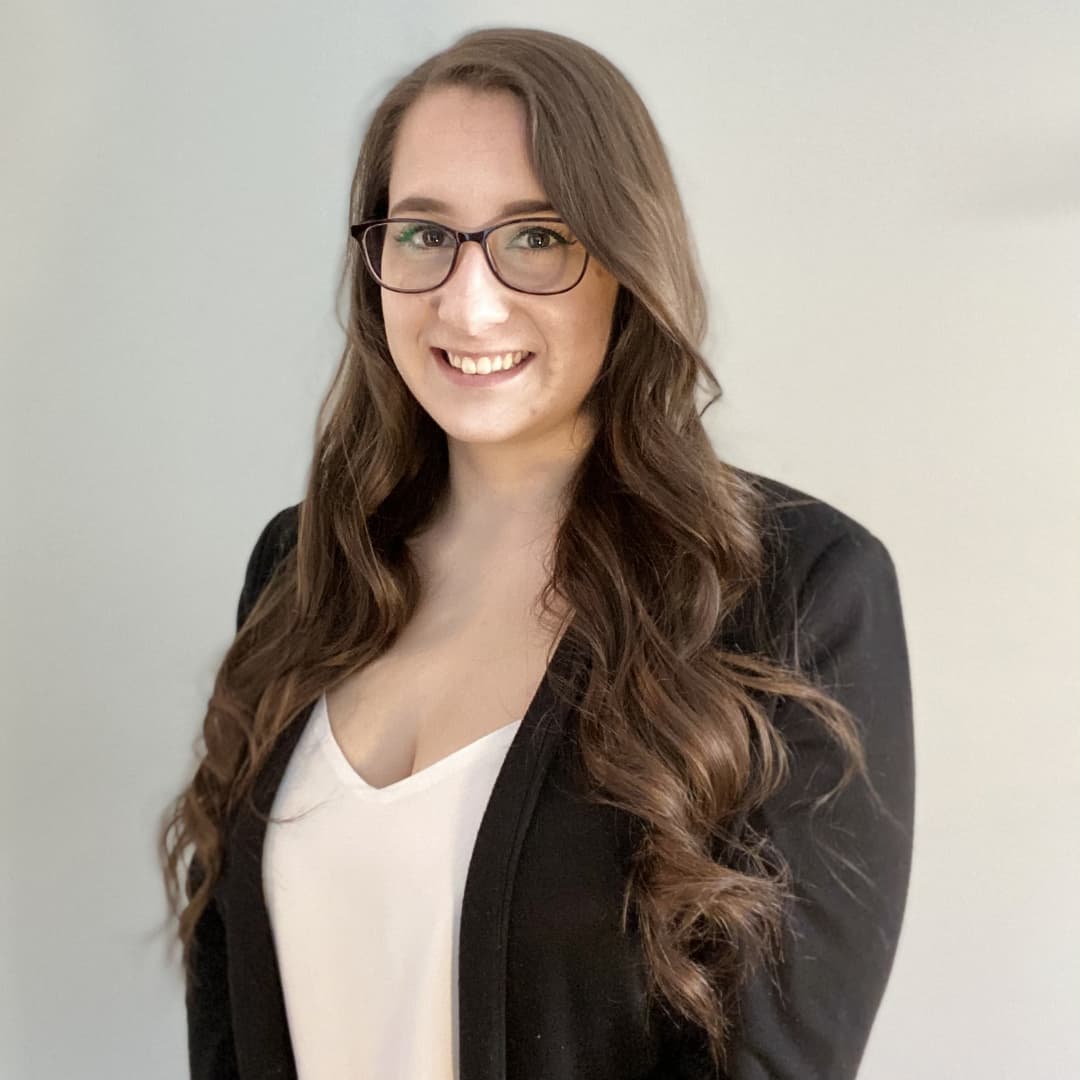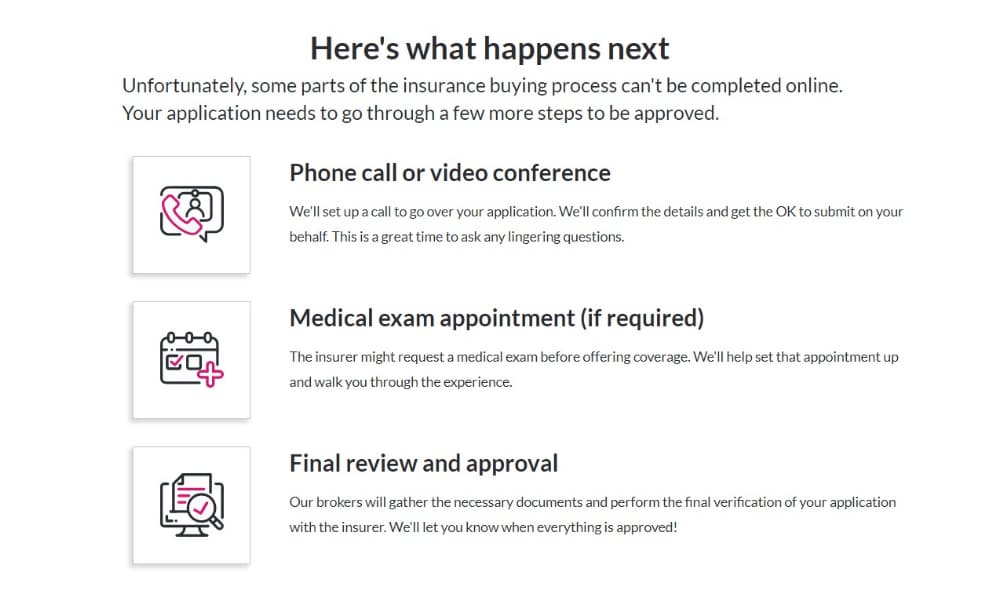What is asked on a life insurance application and how to prepare?
Life insurance companies collect information about your personal and health history to decide the financial risk to insure your life. After you get your quote and agree to apply, your agent will run through some basic questions to make sure you meet the insurance company’s requirements. Depending on your answers, the company will determine your premiums, eligibility, and coverage.
So, you’ve looked at some quotes, maybe even had a call or two with your advisors. You’re feeling pretty good about the premium numbers and coverage in the quote and decide you should go ahead with it. So, now what?
It’s time to do your life insurance application!
At PolicyAdvisor, we’ll walk you through the process step-by-step over video chat from the comfort of your own home—you have nothing to worry about! Because insurance companies are a business, they want to take screening steps to make sure they protect the financial sustainability of their business. The application is a series of underwriting questions for the insurance company to make sure it’s a reasonably financially responsible choice for them to insure your life. They then use this information to provide you with a life insurance rating that corresponds with a premium and coverage offer.
We don’t want you to think of life insurance applications like a scary pop-quiz from school. You already have the answers—the questions are about your unique health and lifestyle history. But that being said, if you’re feeling a little anxious about what to expect, we’ve got you covered.
We’ll go over how you can prepare for your life insurance application, what to bring, and how to make sure the process goes super smooth!
How to apply for life insurance
Step 1 – Get a quote
Before you even get to the application process and paperwork, you want to make sure that you’re given a quote for the coverage that you’re looking for. The best place to begin is getting an instant, online quote at policyadvisor.com. You just have to enter a few basic details about yourself and our quoting tool will search across 20+ of Canada’s best insurance providers to find prices. You can then compare prices, adjust coverage, and select a quote that looks best for you.
Step 2 – Discuss the quote with an advisor
The next step is to speak to one of our licensed insurance advisors. Our team of experts has years of experience to guide you towards a policy that works for you and your family’s financial goals and needs. For some, this means choosing a policy that has lower premiums and for others, it might mean choosing a policy with a little higher premium with greater investment opportunities. Either way, we want to find a policy that works for you—we won’t upsell you on products you do not need!
There’s a step 4 and 5 later, but we’ll get into that later.
Step 3 – Schedule your application call
After this open conversation with our advisor team, you decide which company and policy you want to go ahead with. The advisor will then schedule you for an application call. Because we are an online brokerage, there’s no need to come down to an office or make travel arrangements—we’ll help you through the process in the comfort of your own home either via video chat or phone call. We do have to verify your identity though, so we will require a video call to check that you match your ID.
What to bring to the application call
While your advisor should already have some basic information about your health and lifestyle from the initial quote, you may need to provide some more detailed information about your history. Some of the information you may know off the top of your head, but you’ll need to come prepared with some documents as well.
Here’s what you’ll need to bring to your appointment:
- Your driver’s license to verify your ID
- Your Social Insurance Number
- Citizenship documents
- Policy documents from other insurance policies (we want to make sure we’re not overinsuring you)
- Income details
In some cases, we may ask for photos of ID documents to verify your identity. If you are a non-resident of Canada, you can still apply for life insurance coverage but may have to provide additional documentation of your work permit, study permit, or refugee status. However, each application will be different and have different requirements, depending on which insurer you go with.
What they will ask you on a life insurance application
Aside from the basic identity questions, the application will dive into some of your health and lifestyle information as well. This won’t involve a full interrogation about what you were doing on the second Thursday in March last spring. It’s just a basic, getting-to-know-you introduction to make sure that you meet the insurance company’s specific qualifications for coverage.
About your health
One of the major factors that determines coverage eligibility is your health status. If you have many major health conditions and face a high mortality rate because of it, insurers are less likely to offer high coverage because the chances of paying out are high—that would be too financially risky for them. So to make sure they can sustain their business and make sure the policy will work in your favour too, they may ask about some of the following factors:
- Your family’s health history
- Your health history
- The name and dosages for any current medications
- A list of diagnosed physical health conditions
- A list of diagnosed mental health diagnoses such as anxiety, depression, or bipolar disorder
- Name and address of your current doctor
- Your weight and history of major weight gain/loss
- Dates of any surgeries or procedures in the last 10 years
Most life insurance applications require a follow up medical exam with your doctor to verfiy this information. This might also involve an additional tele-application as well. We’ll get more into that below.
About your lifestyle
While it’s understandable to want to keep details about how you live your life private, insurance companies need to know if you’re engaging in activities that may potentially shorten your lifespan or lead to premature death. The riskier your lifestyle, the greater the risk the insurance companies will have to pay out sooner rather than later (when they’ve had a chance to collect premiums from you).
You may be asked:
- About your travel history in the last 2 years and any upcoming travel plans
- Your driving history (if you’ve been charged with reckless driving, suspended license etc).
- History of drug, smoking (including marijuana), or alcohol offenses (and general drug/alcohol history)
- If you’ve been found guilty of any crimes or if there are criminal charges pending
- If you engage in skydiving, racing, parachuting, scuba diving, mountain climbing, backcountry skiing, or any other high-impact/high risk activity
- If you’ve flown as a pilot or student pilot
About your occupation/income
At this stage of the application, the insurance company doesn’t need to see all your backtaxes from the last 10 years, but they do need to have some idea of how you handle your finances to make sure you can pay your premiums. They also need to know if the job you’re doing puts you at higher risk of being in harm’s way.
You may be asked:
- What your general occupation is
- If you’ve declared bankruptcy
- Information about collecting EI or CPP
Can you avoid a life insurance application interview?
Unfortunately, you can’t play hookey on this one—you can’t avoid an insurance application if you want life insurance. This is the case for both term life insurance and permanent life insurance. In order to place coverage, the insurance company needs to know information about you and your life to know if it’s in their best financial interest to insure you. Those are just the breaks! It’s just business!
Do I have to tell the insurance company everything on a life insurance exam?
The short answer is yes—you have to answer all questions honestly. If it’s the case you leave something out or you lie on your application, a claim could be denied, which could be devastating to your family. For example, if you forgo information about a previous cancer diagnosis, and end up dying of cancer later in life, your insurance company may deny your beneficiaries from the death benefit, meaning you paid years of premium for nothing. Not to be too goody-two-shoes, but honesty is the best policy with insurance applications and medical exams.
What are the next steps?
Step 4 – Schedule your life insurance medical exam
Once the insurance company knows a bit about your medical history, they’ll want to confirm everything with your doctor with a medical exam. During this exam, they may take your blood pressure, take blood samples, and record other information about your weight, height, medications. A medical professional will administer these sample collections as well go through a detailed medical questionnaire that is administered by a life insurance provider. The doctor may call the provider to go through this tele-application and answer any further questions the insurance company has.
While a full medical exam is not mandatory by federal or provincial insurance laws, it may be an underwriting requirement, depending on the insurance company you’re going ahead with. If you’re feeling unsure about the hands-on portion of the application process, there are other policies—they involve fewer needles and ask a bit more questions than the standard medical life insurance, but you get less coverage at a higher cost. This type of insurance is called “no-medical” insurance or simplified life insurance.
Other than those who want to skip the needles, no-medical life insurance is also great for those who be declined because of pre-existing conditions or those with high-risk lifestyles who wouldn’t qualify for traditional life insurance.
If you’re short on time and want to skip the needles AND most of the medical questions, some carriers offer what is known as “guaranteed coverage.” However, it’s again usually more expensive and offers lower coverage amounts than traditional policies.
Read more about the difference between simplified and guaranteed life insurance.
Step 5 – Sign on the dotted line
Once all of your information has been verified and filled out on the application, you’re ready to sign on the dotted line! But before you do, make sure to review the application again and double-check all your information is correct. Teams of underwriters review applications and if they find mistakes or information that doesn’t fit what they’re looking for, they’ll decline your application and coverage.
It’s also important to note that a life insurance application is a legally binding document. This means that you’re legally obligated to do all the things you promised you would do in the application—namely, you have to pay your insurance premiums. But before we even get to that stage, let’s go more into detail about how you can prepare to fill out your application.
Schedule a call
Whether you’re just toying around with the idea of a policy and are looking for quotes or are ready to jump right in, we’d love to chat with you. Our licensed insurance experts at PolicyAdvisor are available to assist you through the whole life insurance application process. We’ll answer questions, provide recommendations for coverage, and work to get you the best coverage at the best price from one of Canada’s top life insurance providers.
- Life insurance companies require a video or in personal call to confirm your identity
- You will be asked about your health and lifestyle to determine premiums and eligibility for coverage
- After your initial application, you may have to do a medical exam or tele-application to further determine your health history and risk


 1-888-601-9980
1-888-601-9980


